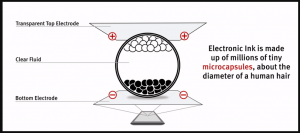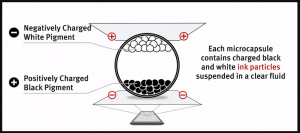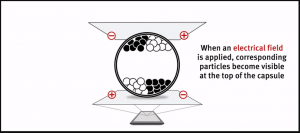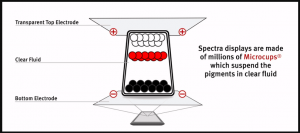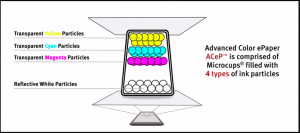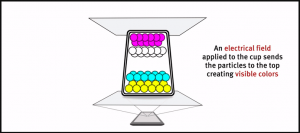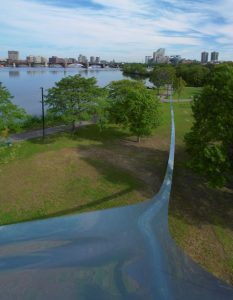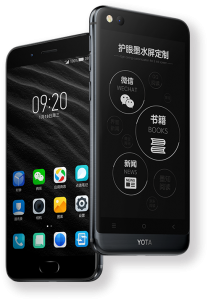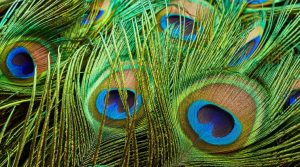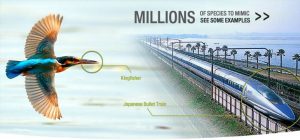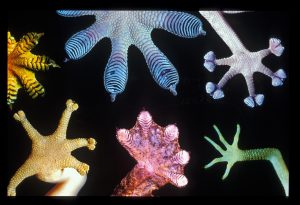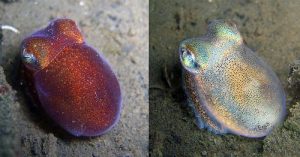Electronic ink technology by E Ink.
It needs no backlighting, because it uses different coloured layers and ambient light to create differently coloured pixels. When laminated into a plastic film and adhered to electronics it creates an Electronic Paper Display (EDP).
So far E Ink created three different systems each serving a different need.
Two Pigment Ink System
That makes the surface appear either white or black.
Three Pigment Ink System
This technology was specifically developed for Electronic Shelf Labels – ESL.
Advanced Colour ePaper (ACeP)
By combining all eight primary colours this ePaper achieves a full colour gamut without needing a colour filter array.
The E Ink Triton displays offer 16 levels of grayscale and are capable of displaying 4096 colours.
E Ink Triton
By charging the different pigments – structurally quite similar printer ink – they change their position and create a picture on the display. As soon as the pigments are charged and showing a steady page they stay in place and the screen needs no more energy until it has to change the displayed screen again. Which makes it an incredible low-energy alternative to commonly used displays.
Once these e Ink microcapsules are created and laminated onto a roll of plastic they can be cut into any shape and used for different purposes. Furthermore E Ink plastic films are highly flexible and can be applied onto pretty much any surface allowing almost anything to become a display.
E Ink film roll running down from a window.
Even though their screens can’t display high quality pictures like LCD displays etc. their energy saving ability makes them perfect for different use cases. Such as price tags, eReaders, presentational tablets, etc.
Also their non reflective screen makes it the perfect digital alternative to paper.
Use case:
The yotaphone actually combines the advantages of both screens and introduces users to the e-ink screen in a very innovative way. The e-ink screen can be used for almost everything the LCD display is, but also allows users to creatively decorate or customise their phones by just changing the phone covers design.
Sources:
https://www.eink.com/electronic-ink.html
https://www.eink.com/e-ink-film.html
https://www.eink.com/color-technology.html
